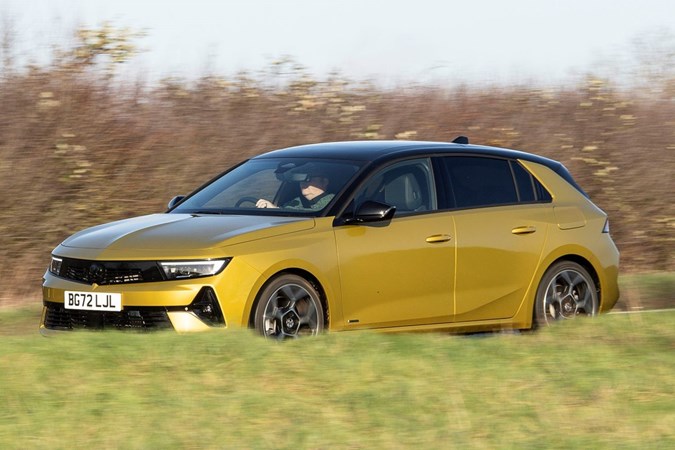You might have come across the term limited-slip differential – or LSD – in the handling section of a Parkers review, probably one for some sort of sports car. Not all cars have one but those that do are often noted for their keen handling and higher cornering speeds. But driving fast isn’t the only purpose of an LSD – they can make a car safer, as well.
But what exactly is an LSD, how does it work and what are the advantages and disadvantages to having one? This guide explains everything you need to know.
How does a differential work?
Before we get into what a limited-slip differential is, we need to go over how a conventional differential works. Every car has a differential of some sort, whether it’s front, rear or four-wheel-drive. It’s essentially a box of cogs and shafts, and its job is to split the engine’s power and torque between the driven wheels.
What a differential looks like and how it works depends on the orientation of the engine and gearbox, and which wheels are driven. In many front-wheel-drive cars, like the Vauxhall Astra, the differential simply links the gearbox to the driveshafts. In a rear-wheel-drive car like the BMW 3 Series, the engine’s power and torque is sent down a rotating propeller shaft that connects to the differential; as well as distributing the power, the differential turns it through 90 degrees to rotate the driveshafts.

Why is a differential needed?
A differential allows a car’s driven wheels to rotate at different speeds. That’s particularly important when going round a corner: the outside wheel travels further than the inside wheel, therefore they need to rotate as different speeds. If they rotated at the same speed, the car would tend to understeer quite badly.
There’s a problem with these so-called ‘open’ differentials, though. The rotational forces that generate an engine’s power and torque follow the path of least resistance. If a single wheel loses traction in a puddle or on a patch of ice, more power will be sent to that wheel, compounding the problem. At best the wheel will simply spin, at worst it could cause you to lose control of the car.
That’s where a limited-slip differential comes in.

How does a limited-slip differential work?
Let’s say you’re out for a fast drive on tight and twisty country road. You round a hairpin and squeeze the throttle down hard. The revs rise, the exhaust roars, but the car doesn’t fire down the road as you expected. Instead, the inside driven wheel – be it front or back – has spun up and generated a dramatic but entirely useless cloud of tyre smoke.
This is the experience that a lot of enthusiastic drivers have in cars with a conventional ‘open’ differential. You might also have a similar experience of one wheel losing traction when accelerating along a slippery off-road trail, or on a snow-covered road. An LSD prevents one wheel from rotating significantly faster than the other, maintaining traction and helping the driver stay in control of their car.
A mechanical LSD is a complex device and there are many different designs, but the way it works is remarkably simple. When one wheel loses traction, a mechanical feedback loop restricts the amount of power it receives and redirects the excess to the opposite wheel until traction is regained. The exact percentage of power sent to each wheel varies, but an LSD keeps the split as even as possible.
Many manufacturers are replacing traditional mechanical LSDs with electronically controlled systems that achieve the same effect and are more fuel efficient into the bargain.

What are the advantages of a limited-slip differential?
If you’re an enthusiastic driver, an LSD is definitely a good thing to have in your car. By keeping the driven wheels rotating at roughly the same speed, the car is able to turn into a corner more keenly and you can get back on the power earlier, carrying more speed through the corner and onto the next straight. An LSD also makes power sliding a rear-wheel-drive car much easier.
Fitting an LSD can make a huge difference to a car’s handling, as well. The Ford Fiesta ST is a brilliant little hot hatch in standard form but the LSD that’s included in the Performance Pack gives the handling a sharpness that elevates the car to another level.
More relevantly, an LSD is beneficial if you live somewhere where the roads are regularly slick with mud or ice. By evening out how much power and torque the driven wheels receive, an LSD – mechanical or electronic – helps maintain forward momentum when the going gets slippery.

What are the disadvantages of a limited-slip differential?
In some cars, you only really start to notice the keener handling an LSD creates when travelling at speeds that are inadvisable on the public road. Similarly, power sliding should only be attempted at a racing circuit or another venue that’s been closed for the purpose of skidding around.
An LSD can actually make cornering at lower speeds more difficult. Under those circumstances, you need quite a big difference in speed between the inside and outside driven wheels, but an LSD doesn’t allow that, pushing the car into potentially quite pronounced understeer.

What cars have a limited-slip differential?
Relatively few cars currently on sale in the UK have a mechanical LSD. Those that do include the Toyota GR86, Mazda MX-5 and even the Ford Transit Custom Trail van. LSDs are also available as an option on some cars including the Ford Puma ST.
Electronically controlled LSDs are much more common. You’ll find one on high-power versions of the Cupra Leon, the Kia EV6 GT and assorted BMWs including the M3.
Looking for more jargon-busting motoring meanings? Head over to our Parkers Car Glossary page and take a look at our other definitions
Just so you know, we may receive a commission or other compensation from the links on this website - read why you should trust us.














